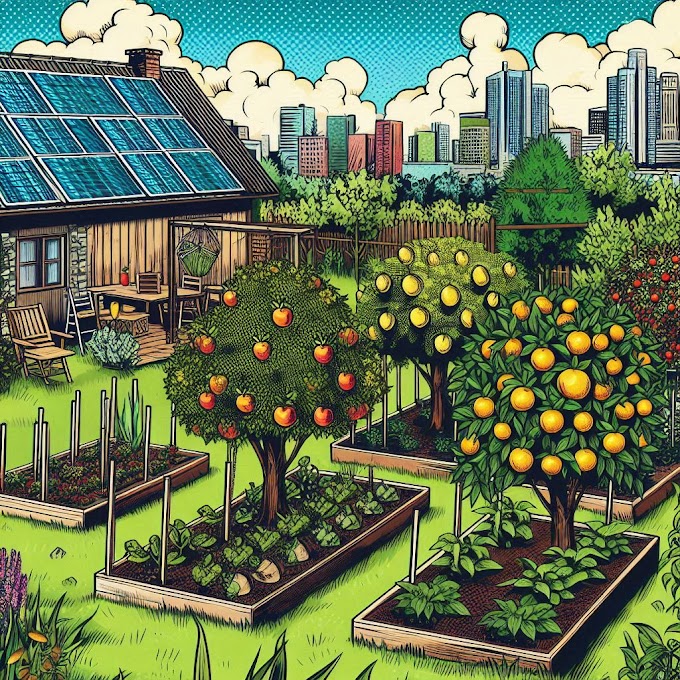Winter Survival Gardening: Preparing Your Garden for the Cold

As the chill of winter approaches, a survival garden requires special care to ensure its resilience and productivity. Even during the harshest months, with proper planning and preparation, your garden can thrive or lie dormant, ready to awaken in spring. Here’s your ultimate guide to winterizing your survival garden and extending its utility through the colder season.
Step 1: Clean and Tidy Your Garden
Before winter sets in, it’s essential to clear away debris and prepare the soil for the months ahead:
Remove Dead Plants: Clear out any spent crops and weeds to prevent pests and diseases from overwintering.
Compost Responsibly: Add healthy plant matter to your compost pile, but discard diseased plants to avoid contamination.
Clean Tools and Equipment: Disinfect your tools to remove lingering pathogens, ensuring they’re ready for spring.
Step 2: Protect Your Soil
Unprotected soil can erode, lose nutrients, and become compacted over winter. Keep it healthy with these tips:
Add Mulch: Cover beds with straw, leaves, or wood chips to insulate the soil and prevent erosion.
Plant Cover Crops: Sow winter rye, clover, or vetch to fix nitrogen, improve soil structure, and suppress weeds.
Avoid Bare Soil: Use tarps or row covers if mulch or cover crops aren’t an option.
Step 3: Extend Your Growing Season
With a few strategic choices, you can continue harvesting fresh produce well into winter:
1. Cold Frames
Simple structures made of wood and glass (or clear plastic) trap heat and protect plants.
Ideal for greens like spinach, kale, and lettuce.
2. Row Covers
Lightweight fabric shields crops from frost and light snow while allowing sunlight to penetrate.
3. Greenhouses or Hoop Houses
Invest in a small greenhouse or construct a hoop house for year-round growing of hardy vegetables like carrots and beets.
Step 4: Focus on Cold-Hardy Crops
Choose plants that thrive in cooler temperatures for winter harvesting:
Leafy Greens: Kale, spinach, Swiss chard, and collards.
Root Vegetables: Carrots, turnips, parsnips, and radishes.
Brassicas: Cabbage, broccoli, and Brussels sprouts.
Alliums: Garlic and onions can be planted in fall for a spring harvest.
Step 5: Store and Preserve Your Harvest
Winter is the perfect time to rely on the fruits of your labor. Preserve your harvest to ensure a steady food supply:
Root Cellars: Store potatoes, carrots, and other root vegetables in a cool, dark, and humid environment.
Canning and Fermenting: Extend the shelf life of tomatoes, beans, and other produce.
Freezing: Blanch and freeze surplus vegetables for long-term storage.
Drying: Dehydrate herbs, fruits, and vegetables for compact storage.
Step 6: Prepare Perennials and Trees
Ensure your perennial plants and fruit trees survive the winter:
Prune Trees and Shrubs: Remove dead or damaged branches to prevent breakage from snow.
Mulch Around Roots: Insulate the roots of perennials like asparagus and berry bushes.
Wrap Young Trees: Protect against frost damage and pests with tree wraps or burlap.
Step 7: Set Up Wildlife Barriers
Winter can drive hungry animals to your garden. Protect your crops with these methods:
Fencing: Install sturdy barriers to deter deer and rabbits.
Netting: Cover vulnerable plants with netting to keep birds at bay.
Repellents: Use natural deterrents like garlic spray or homemade chili solutions.
Step 8: Plan for Next Year
Winter is the perfect time to reflect on the past growing season and plan for the future:
Test Your Soil: Conduct a soil test to identify nutrient deficiencies and amend accordingly.
Order Seeds: Beat the spring rush and secure your desired varieties.
Design Your Garden Layout: Rotate crops to prevent soil depletion and pest buildup.
Step 9: Embrace Indoor Gardening
When the ground outside is frozen, bring your gardening indoors:
Herbs: Grow basil, thyme, and parsley on a sunny windowsill.
Microgreens: Cultivate nutrient-packed greens like radish and mustard in trays.
Hydroponics: Set up a system for leafy greens and small vegetables year-round.
Winter doesn’t mean the end of your gardening journey—it’s an opportunity to prepare, preserve, and even grow. By protecting your soil, extending your harvest, and planning for the seasons ahead, your survival garden can remain a source of sustenance and resilience year-round.
Stay one step ahead of the frost, and let your garden thrive, no matter the weather.













